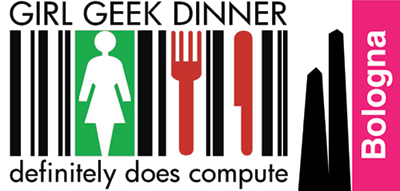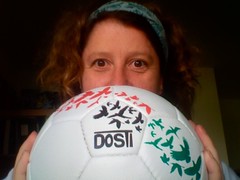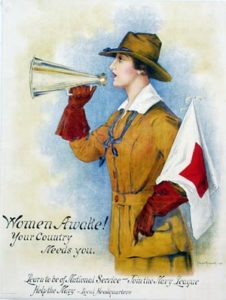 Sunday, I did an intensive, advanced training (as opposed to an introductory/basic training) for representatives from the roller derby leagues in Portland (the Rose City Rollers) and Seattle (Rat City Rollers) regarding volunteer management. These leagues involve several hundred volunteers – and have done so, quite effectively, for a few years now. Volunteers don’t just help at games; women’s roller derby has a particular focus on empowering women and girls, and most meets include fundraising components for a charity, which means volunteers are engaged in a huge range of activities.
Sunday, I did an intensive, advanced training (as opposed to an introductory/basic training) for representatives from the roller derby leagues in Portland (the Rose City Rollers) and Seattle (Rat City Rollers) regarding volunteer management. These leagues involve several hundred volunteers – and have done so, quite effectively, for a few years now. Volunteers don’t just help at games; women’s roller derby has a particular focus on empowering women and girls, and most meets include fundraising components for a charity, which means volunteers are engaged in a huge range of activities.
But the rapid growth of these leagues – which shows no signs of abating – means that they don’t always have the procedures and policies in place to handle volunteer management challenges as they arise, or even how to identify issues long before they become bigger problems for the organizations. I hope that my training helped them to be able to access the resources they need to deal with specialized volunteer recruitment, board recruitment, volunteer conflict, keeping volunteers motivated, tracking volunteer information and contributions, and anticipate and address issues regarding volunteer engagement long before such becomes a program killer.
But with a staff made up of paid employees and volunteers, most of whom have NO training in working with volunteers, these leagues have done a remarkable job of engaging volunteers already.
What are people at these roller derby organizations doing that many traditional organizations that involve volunteers are not?
- They have organizational-wide commitments to volunteers being satisfied with their experiences. Supporting and honoring volunteers is EVERYONE’S job. It never dawned on them that this should be just one person’s job at an organization, or that an employee could refuse to work with volunteers.
- All staff work with volunteers. ALL STAFF. That means all staff — every paid person and all volunteers — create assignments for volunteers and/or work with volunteers. That means, even though there were just two organizations represented at this training, I wasn’t speaking to just two people: the designated volunteer coordinators. Instead, I was also talking to paid staff, volunteer staff, players, event volunteers, committee chairs, skating officials and on and on.
- It never dawned on them to value volunteers purely by an hourly monetary amount, and some of them were actually offended by the idea. They acknowledge that it’s sometimes necessary for a grant application, but otherwise, they have much better reasons for saying they involve volunteers, and why volunteers are necessary to the organization.
- They use every Internet tool and software tool they can find to work with and support volunteers – the value of such is obvious to them, with no need for a virtual volunteering workshop to convince them (as is with most traditional organizations).
- Volunteers go to the same meetings as employees, and take leadership roles in coordinating events, reaching out to sponsors, selling merchandise, and representing the organization. You can’t tell who is or isn’t a volunteer just by a person’s title!
- They didn’t blink over the phrase, “If a task can be done by a human, it can be done by a volunteer.” When I use that statement in a training for traditional organizations, there is often an uproar (which is why I use it – how I love stirring things up!). The Roller Derby reps reaction: “yes, and?”
- They don’t look for ways to thank volunteers with regards to mugs and pins, or posters that say things like, “Volunteers are our angels!” They know what their volunteers want: real, sincere appreciation that permeates the organization, that doesn’t happen just on a volunteer appreciation luncheon that, at many other organizations, the board nor the Executive Director would even bother attending.
- While they want to be great at handling conflict among staff, including volunteers, they completely accept that conflict and criticisms happen and have no fear of such (most orgs I work with want to know how to prevent all conflict and criticism).
- They embrace the idea of most volunteers joining up because they want to have fun. They don’t think that’s a bad idea for volunteering.
- They have an organization that welcomes people of all ages and all walks of life, and these organizations could probably lead their own workshop on how to creating a welcoming environment for teen volunteers, LGBT volunteers, low-income volunteers, homeless volunteers, volunteers with disabilities and various other groups that are under-represented at so many other organizations. It’s a workshop I would LOVE to attend!
- Not once did I ever hear, “Oh, we’re not allowed to do that.” I hear that at least twice during presentations to other organizations. Not that these organizations don’t know and follow rules, like how to screen and supervise volunteers that will work with teens – but when it comes to ideas about new ways to work with volunteers, they never come from a place of fear.
- They laughed heartily at my story of a certain online discussion group for volunteer managers in the USA that shall remain nameless having constant discussions about where to find examples of forms and policies (“Don’t they know how to use Google?”) or how to ban volunteers that have tattoos (I can’t repeat what was said re: this).
I got this gig because I did a presentation earlier this year for the Northwest Oregon Volunteer Administrators Association (NOVAA) on trends in volunteer engagement. NOVAA serves the greater Portland metropolitan area, including Vancouver, Washington. Afterwards, a woman came up, handed me a card, lauded me for my presentation and said, “You are soooo roller derby.”
As I learned from attending two match nights, roller derby players leave everything on the track during a game, and I left everything in that conference room for this training on Sunday; I have never been more exhausted after a training, so determined was I to win these folks over and point them to the resources they need to be even more successful at engaging with volunteers. And one of my favorite comments afterwards was this:
“Srsly, this was awesome. I have a very low tolerance for BS facilitated meetings about hypothetical nonsense. This was none of that.”
Almost made me want to cry… a high compliment, indeed.
If you are putting together a volunteer management conference, listen up: I’m happy to train, and I really hope you will invite me to do so. But invite someone from a roller derby league too – I recommend the Portland league in particular, of course. Because it’s long overdue for these conferences to get a shake up. And I think roller derby may be just the org to do it!
I have seen the future of volunteer engagement and IT’S ROLLER DERBY.
Here’s a photo on Facebook that sums up just what an amazing experience matches can be, btw.







